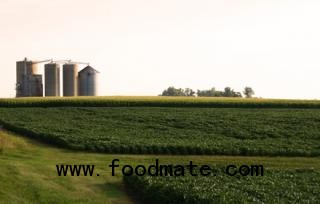
The University of Illinois ag economist recently ran the numbers on potential cash rental rates in Illinois tied to a range of corn and soybean prices in the next five to 10 years.
It all goes back to per-acre profit on rented land, a figure that's nailed down by subtracting cash rental rates from overall farmer and landowner returns. Schnitkey used a long-term price range for corn from $3.50 to $5.50 per bushel, and $8.50 to $12.50 for soybeans. Why these prices?
"The $4.50 corn and $10.50 soybean prices represent estimates of average prices over the next five to 10 years," he says. "The $3.50 corn price and $8.50 soybean price represent a below-average price scenario compared to long-run prices. Sometime in the future commodity prices likely will reach these levels, perhaps staying at these levels for several years. These prices have happened relatively recently, with corn prices averaging close to $3.50 in 2009."
Schnitkey's research shows a range of farmer/landowner returns ranging from $60 to $172 an acre for the low end of the price range for corn and soybeans and $331 to $510 an acre on the high end ($5.50 and $12.50 for corn and soybeans, respectively). At the $4.50 and $10.50 price points for the two crops, the range of returns runs from $196 to $341 an acre.
So, with those numbers in hand, it leaves the big question: What should the cash rental rate be? Obviously, the price has to be viable for both the farmer and landowner, but how that price is reached depends on the involved parties' risk aversion and willingness to make year-to-year changes.
"It is difficult to set cash rents in the current price environment at levels that will not have to be revised in future years. For example, one strategy could be to set cash rents based on long-run prices and then leave those rents unchanged in future years. This strategy would result in cash rents that are significantly below those being currently negotiated.
For central Illinois with high-productivity farmland, long-run prices result in a $341-per-acre operator and farmland return, suggesting cash rents in the low to mid-$200 range," Schnitkey says. "A mid-$200 per-acre rent is significantly below average cash rents in central Illinois, where several counties have average cash rents above $300 per acre. Cash rents in the low- to mid-$200 range for high productivity farmland would result in high farmer returns over the past several years."
There is one major variable in the equation, though. If and when grain prices do decline in the future, it will lead to lower cash rental rates. But how long will it take for these market conditions to match up? That's going to be an important answer for many farmers moving forward.
"Several years of lower prices will be transmitted to many landowners in the form of lower cash rents. The question will be how many years it will take for cash rents to decline once a low-price environment occurs," Schnitkey says. "While landowners may wish to mute return changes over time, achieving that aim is not entirely possible given the variable price environment."





